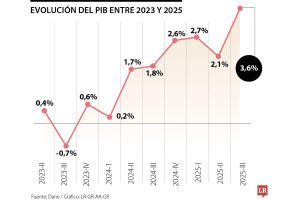Preparing for retirement means building a nest egg that will sustain your lifestyle long after you decide to stop working. It can be a daunting task if you only consider your investment portfolio and other sources of income, such as Social Security, while overlooking another important asset: the equity you have in your home.
After all, your home is likely one of the most valuable things you own. If you are willing to consider selling or borrowing against it to support your income, but exclude its value from the sum total of your financial holdings, you risk understating how well prepared you are for retirement.
An important part of retirement planning is determining how much you can withdraw annually from your portfolio, based on a set of assumptions about portfolio strategy and future market performance. When a plan based on those assumptions can’t support your desired level of spending in retirement, it may lead you to sacrifice spending or take more risk to boost investment returns.
Home equity can change that equation and prevent retirement investors from either making unnecessary sacrifices, or worse, taking more investment risk than they are comfortable with. Here are two scenarios that illustrate the potential benefits of including home equity in your overall financial picture.
Renting vs. Buying (and Selling) a Home in Retirement
Many retirees wonder whether they should rent or buy a home, particularly when moving to a more retirement-friendly locale. Looking at estimates of U.S. home prices, the conventional wisdom often holds true: Buying can be considerably more financially sound than renting, including in retirement.
Part of the reason are the potential tax benefits and other public subsidies that may be available for homebuyers. But it’s also because home prices are only weakly correlated with the capital markets.1 That means that a home can act as a diversifying source of wealth and serve as a financial backstop, if your other investments falter.
Consider a hypothetical retiree who uses the cash from the equity in her first home to buy a smaller, less expensive home, in lieu of renting a home with the same value. Eventually, when her retirement portfolio is exhausted, she sells this home and moves into a rental. In such a case, the probability of her running out of money falls substantially, according to our Global Investment Office research.2 That makes her more likely to avoid having to change her spending plan or take on more investment risk to meet her financial goals.
Tapping Home Equity with a Home Equity Line of Credit (HELOC)
For a variety of reasons, especially for retirees who intend to remain in their homes, it may be preferable to borrow against your home than to sell it. One way to do that is a home equity line of credit, or HELOC, which is a revolving source of funds secured by your home that you can access to pay for expenses and repay periodically. HELOCs can allow a retiree to shift income sources during times of market distress. When a retirement portfolio isn’t performing well and the retiree faces having to sell portfolio assets at depressed prices to support her income needs, she can instead use this home equity credit line to cover that income gap until the portfolio recovers.
Consider what happened in the global financial crisis: Over a 10-month period starting in May 2007, the S&P 500 lost more than half of its value. But three years after reaching the bottom of that brutal selloff, the index had recovered all of its losses on a total return basis.3 In order to ride out this turbulent period, a retirement investor would have needed a way to support her income while her portfolio endured considerable pain. A HELOC, in such cases, can act as a financial cushion, allowing the investor to potentially avoid selling portfolio assets at fire-sale prices to provide income.
Market history comprises several similar eras—in the late 1960s, early 1970s and early 1980s.4 Our research shows that using home equity to support income during these periods mitigated the losses on retirement holdings and allowed retirees to ride through the turbulence, without significantly damaging their portfolios.
To be sure, investors should consider a number of factors when including home equity in their retirement plan. HELOCs generally have variable interest rates, which means that rising interest rates can increase your regular payment. And, as with any type of home loan, the borrower may encounter circumstances that require her to sell and move; for reasonably well-funded retirement plans, however, such cases were uncommon in our analysis.
Look at Your Full Financial Picture
Knowing how well you are prepared for retirement depends a lot on how broadly you define your balance sheet. Households typically have far more resources than just their investment portfolios, something that should factor into any goals-based planning. Your Financial Advisor is well-equipped to discuss different scenarios and strategies with you and to help you create a plan to sustain your income and lifestyle comfortably into the future.






